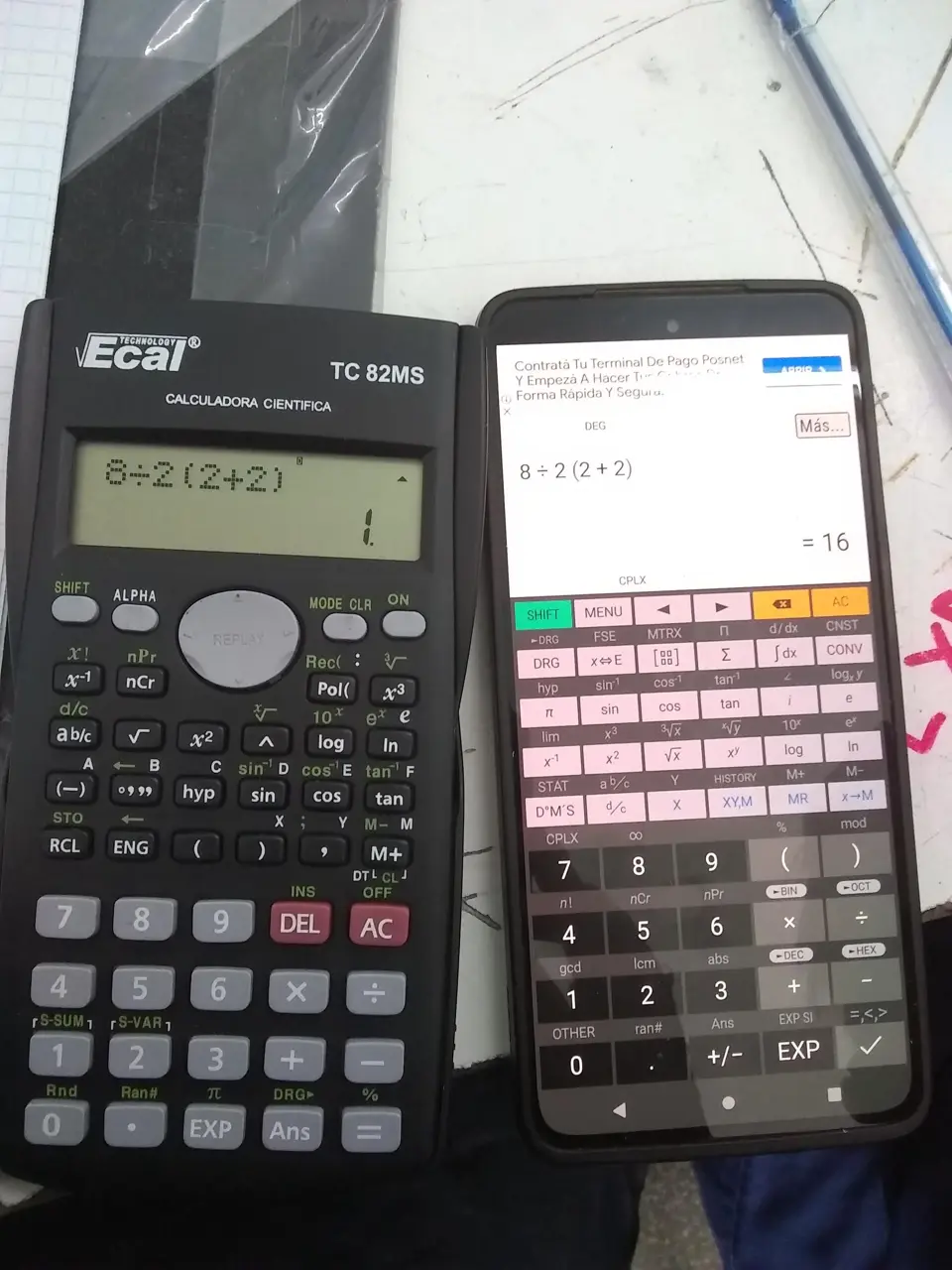this post was submitted on 03 Dec 2023
2 points (100.0% liked)
196
16215 readers
2257 users here now
Be sure to follow the rule before you head out.
Rule: You must post before you leave.
founded 1 year ago
MODERATORS
you are viewing a single comment's thread
view the rest of the comments
view the rest of the comments

8÷2(2+2)=2(2+2)÷2(2+2)
alternatively if 8÷2(2+2)=16 that means 2(2+2)=8÷16 in other words 8=0,5 which it isnt
your first line is correct, but while it looks like 1 (and it might be under different conventions), evaluating according to standard rules (left to right if not disambiguated by pemdas) yields
2(2+2)/2(2+2) = 2(4)/2(4) = 2*4/2*4 = 8/2*4 = 4*4 = 16
Using implicit multiplication in quotients is weird and really shouldn't happen, this would usually be written as 8/(2*(2+2)) or 8/2*(2+2) and both are much clearer
Your second argument only works if you treat 2(2+2) as a single "thing", which it looks like, but isn't, in this case
not much to refute in the argument of whether its 16 or 1 as its all a matter of convention in the end and ultimately the root of the argument is poor formatting of the expression, im used to implicit multiplication taking precedent and that 2(2+2)===2*(2+2) and that for my first argument having the same expression on 2 sides of a division sign automatically equals 1, but how come you find implicit multiplication in quotients weird? seeing as it happens literally all the time in equations, unless thats a difference in school systems or similar im unaware of
for fun also rewrote the expression into powers of 2 and indeed depending on how you go about implicit multiplication i end up with either 2⁰ or 2⁴, so for the sake of sanity i figure its best to just say x₁=1; x₂=16
It's weird because usually the people writing the expressions want to communicate clearly, and stuff like 1/2x is not immediately clear to everyone, so they write the 1/2 as a fraction.
The same expression on both sides of the division sign only reduce to one if they actually bind to the division sign, which is rarely an issue, but that is exactly the thing that is in question here. I think it's clear that 1 + 1/1 + 1 is 3, not 1, even though 1+1 = 1+1.
But as you said, of course, the evaluation order is just convention, you can just as well write everything in https://en.m.wikipedia.org/wiki/Reverse_Polish_notation